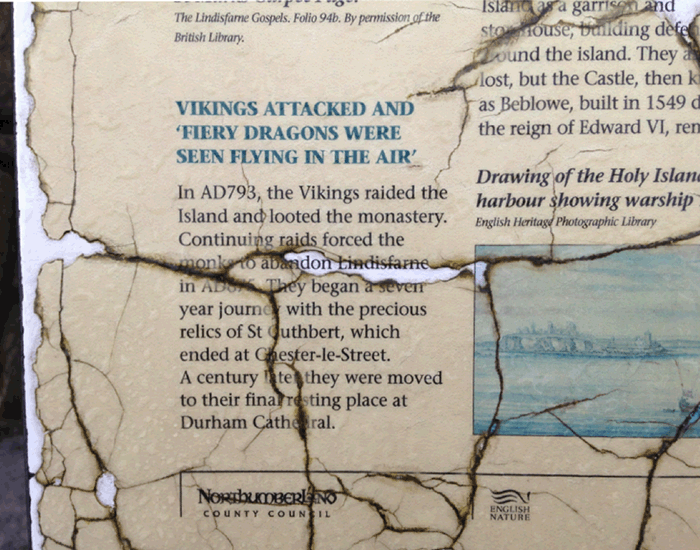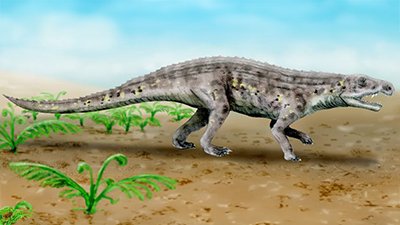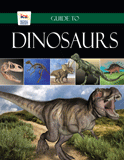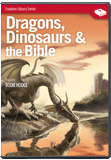Drawing Out the Biblical Leviathan
In a previous article I addressed God’s challenge to Job to see if he could control the great and powerful creature Behemoth (Job 40:15). God did this because Job in his great suffering frequently asked to be allowed to have a trial with God (Job 9:16, 13:3) and had called into question God’s justice (Job 40:8). In Job 41, God continues to challenge Job by getting him to consider his inability to control another giant animal: the terrifying Leviathan:
Can you draw out Leviathan with a fishhook or press down his tongue with a cord? (Job 40:1)
Leviathan is not a creature that little children can play with and is too large for traders to sell.
God challenges Job by questioning his ability to capture Leviathan and make it his servant (Job 41:1–4). Leviathan is not a creature that little children can play with (Job 41:5) and is too large for traders to sell (Job 41:6).
God reminds Job that if he is even thinking of capturing Leviathan with harpoons or fishing spears, then he needs to consider the battle that will take place (Job 41:7–8). If Job does engage in battle with Leviathan, it will be the first and only time he does battle with this mighty creature. Leviathan cannot be subdued by any man: this is a false hope, as he “is laid low even at the sight of him” (Job 41:9). In other words, Leviathan is a creature who brings fear into the heart of man; whereas, he is afraid of no one (Job 41:33).
This brings God to state the most important issue:
No one is so fierce that he dares to stir him up. Who then is he who can stand before me? (Job 41:10)
If Job is not brave enough to do battle with Leviathan, then how can he even begin to argue with God? No one can judge God (cf. Job 40:8); his judgements are unsearchable (Romans 11:33). But what is this creature Leviathan?1 The identification of Leviathan, like Behemoth, is widely disputed amongst biblical scholars as can be seen by its varied interpretations:
- A mythical creature2
- A real earthly creature (crocodile)3
- An earthly creature who also represents a spiritual force4
Another option that is generally not considered by scholars is that Leviathan was a real creature that is now extinct.
Another option that is generally not considered by scholars is that Leviathan was a real creature that is now extinct. In order to correctly identify Leviathan, it is necessary not only to pay close attention to all the details in the text about him but also to keep in mind our presuppositions about the history of the world as this will impact our interpretation.
Leviathan in the Bible
The Hebrew word (לִוְיָתָן liwyātān)5 appears six times in five verses in the Old Testament (Job 3:8; 41:1; Psalm 74:14, 104:26; Isaiah 27:1–twice). It is derived from the root lwy ‘“twist, coil,” and means “the sinuous one,” designating a kind of serpent.6 Job 26:13 mentions God’s mastery over the “fleeing serpent” (nāḥāš bārîaḥ), a phrase that is only found in Isaiah 27:1 to describe “Leviathan the twisting serpent” (liwyātān nāḥāš bāriaḥ). The Greek translation of the Old Testament (LXX) even calls Leviathan a dragon (δρακωον).
According to Jewish tradition, Leviathan was created on the fifth day of creation (see 2 Esdras 6:49; 2 Apocalypse Baruch 29:4; Genesis Rabbah vii 4; Targum Pseudo-Jonathan on Genesis 1:21).7 This is because the Hebrew word used in Genesis 1:21 for the “sea-creatures” is tannînim, the plural form of the word used for Leviathan the sea “dragon” (tannîn) in Isaiah 27:1. Although, the word tannîn is not only used of sea creatures. It appears elsewhere to speak of land creatures (Exodus 7:9).8
Leviathan: Mythical or Real?
The majority of biblical commentators, who accept an evolutionary view of the history of the world, tend to interpret Leviathan in the Bible as a chaos creature or a crocodile (the only likely candidate amongst creatures alive today). Old Testament theologian and theistic evolutionist Tremper Longman III rejects the idea that Leviathan could have been a dinosaur (or extinct sea creature9):
[T]he attempt to identify Leviathan with a dinosaur fails, as with Behemoth, because the author of Job would not have been aware of dinosaurs, which became extinct long before the advent of humans.10
In the footnote of this quote Longman reasons, “The idea that dinosaurs and human beings existed at the same time…is supported by neither science nor the Bible.” To identify Leviathan as a “dinosaur” (extinct sea-creature) only fails because Longman has already embraced an evolutionary view of the world and rejected the biblical account of creation as being historical. Furthermore, the idea that dinosaurs and human beings did not exist at the same time is falsified by both scientists and the Bible (see Mystery of Behemoth): dinosaurs, which are land animals, and man were both made on the sixth day. For Longman, because “no real animal can meet the needs of the rhetorical moment,”11 Leviathan “…represents the power of chaos…a dramatic way of speaking of his greatness and strength.”12
However, just as with Behemoth, the detailed description of Leviathan shows that a real creature is being spoken of: he cannot be captured by fishhook (41:1); weapons are ineffective against him (41:7); no human can tame him (41:8); his body is impenetrable (41:13-17); his teeth are sharp (41:14); his back is made of a row of shields that are so closely joined together that nothing can penetrate his skin (41:15-17); he is exceptionally strong (41:22); when he raises up, the mighty13 are afraid (41:25); not a single weapon can harm him (41:26, 28–29; when he moves along the banks of river he leaves his mark in the mud (41:30); no creature on earth is like him (41:33); and he belongs to the world of real life creatures as he is king over all of them (41:34).
If Leviathan, in Job 41, is a mythical creature, then what is the point of this lengthy description of him?
If Leviathan, in Job 41, is a mythical creature, then what is the point of this lengthy description of him? These things could not be said of a non-existent creature. Leviathan is presented as a real and terrifying creature that Job has observational knowledge of.
Scholars who reject the interpretation of Leviathan as a mythical creature generally accept that Leviathan is the crocodile who roamed the banks of the river Nile in Egypt.14 There are several reasons, however, why the crocodile identification does not work: (1) Humans can control crocodiles, but no human can control Leviathan (Job 41:8, 10, 13–14); (2) Crocodiles do not breathe fire (41:18-21); (3) Weapons can pierce crocodiles, but no weapon can pierce Leviathan (Job 41:7, 26); (4) Water does not boil when crocodiles swim through the sea, and they do not leave a white trail behind them (Job 41:31-32); and (5) Egyptian paintings attest to crocodiles being hunted in the ancient Near East.15
What about the idea that Leviathan in the Bible represents an evil spiritual force (i.e., Satan)?16 Other passages that mention Leviathan do use him as an embodiment of evil (cf. Psalm 74:14; Isaiah 27:1, see below), but this is not how he is portrayed in Job 41. God is proud of Leviathan (Job 41:4, 25–26; cf. 40:15, 19), he is not in opposition to him, as he is “portrayed in a rather positive way, as creature beyond compare.”17 Old Testament scholar D.A. Clines rightly points out, “while Leviathan is fearsome, there is no thought of a battle with God, and Leviathan is God’s creature, not his rival.”18 Nothing in Job 41 indicates Leviathan is an evil spiritual force; rather, the emphasis is on his power.19 There is a difference between being powerful and being evil.
Identifying Leviathan
There are several likely suggestions from extinct marine reptiles as to the identification of Leviathan.
Because creationists rightly accept Genesis 1–11 as real history, there are many options from extinct creatures as to what Leviathan could have been. The description of Leviathan would seem to fit that of a semi-aquatic creature, as he not only lives in the sea (יָ֜֗ם, yām) (41:31–32; cf. Psalm 104:25–26) but can also venture up onto land (Job 41:5, 30). There are several likely suggestions from extinct marine reptiles as to the identification of Leviathan: Kronosaurus, Liopleurodon, Sarcosuchus, Mosasaurus, and Plesiosaurus. Sarcosuchus imperator (Super Croc)20 seems to match many aspects of the physical features of Leviathan. However, there are problems with the identifying Sarcosuchus as Leviathan: (1) It does not really fit the description of Leviathan as a twisting sea serpent; and (2) It has no known mechanism to breathe fire:21
His sneezings flash forth light, and his eyes are like the eyelids of the dawn. Out of his mouth go flaming torches; sparks of fire leap forth. Out of his nostrils comes forth smoke, as from a boiling pot and burning rushes. His breath kindles coals, and a flame comes forth from his mouth. (Job 41:18–21)
This description of Leviathan breathing fire causes scholars who accept the crocodile interpretation to argue that these verses are hyperbolic.22 But this is an unnecessary conclusion. Just because there is no creature alive today that can breathe fire does not mean that there never was a creature (that is now extinct) who could do this. For example, the Anglo-Saxon Chronicle reports that in the year 793 AD, when Vikings raided Lindisfarne island (Northern England) and robbed the monastery, fiery dragons were seen flying in the sky.23 Moreover, today the bombardier beetle ejects a hot chemical spray (of hydrogen peroxide and hydroquinone) that can burn you to defend itself against predators.24

A sign at the monastery at Lindisfarne Island reads, “VIKINGS ATTACKED AND ‘FIERY DRAGONS WERE SEEN FLYING IN THE AIR’
In AD 793, the Vikings raided the Island and looted the monastery. Continuing raids forced the monks to abandon Lindisfarne in AD 876.” Photo credit, author
Given that the description of Leviathan (especially breathing fire) does not fit with any known creature today or from fossil evidence, it may be that he was an extinct creature we currently do not know about: a sea serpent (dragon) that breathed fire.25
The Judgment of Leviathan: Pagan or Polemic
The word Leviathan appears twice in Isaiah 27:1 using poetic (parallelism) and apocalyptic ways of describing him symbolically.26 Isaiah identifies Leviathan here as the fleeing and twisting serpent who is also the dragon of the seas:
In that day the Lord with his hard and great and strong sword will punish Leviathan the fleeing serpent, Leviathan the twisting serpent, and he will slay the dragon that is in the sea. (Isaiah 27:1)
In Job 41, God is the creator of Leviathan, and here in Isaiah, Leviathan is his enemy who will be defeated at the eschaton.
In Job 41, God is the creator of Leviathan, and here in Isaiah, Leviathan is his enemy who will be defeated at the eschaton. There is a similar text dated to around 1500 BC from the Ugaritic Baʿal Cycle, where Baʿal, who was part of the pantheon of Canaanite gods, kills the mythical chaos monster Leviathan:
When you killed Litan [Leviathan], the fleeing serpent, annihilated the twisty serpent, the potentate with seven heads.27
It has been argued by certain scholars that Isaiah simply borrowed this from pagan polytheistic mythologies. However, the idea of direct borrowing cannot be sustained.28 This is not a syncretistic use of Baʿal image for Yahweh; rather, Isaiah is arguing: ‘“It is the one true God who has done this [defeated Leviathan], not your pagan deities.”’29 Isaiah was polemicizing pagan religion, while at the same time confirming the truth of monotheism (Isaiah 44:24, 46:1–10; cf. 1 Kings 18:16–40).
God the Master of Leviathan
Just as God challenged Job to “look on everyone who is proud and abase him” (Job 40:11), so Leviathan “sees everything that is high; he is king over all the sons of pride.” (Job 41:34). Job could not abase (lower) proud humanity, but he also cannot take on the proud Leviathan. The only one who can bring down Leviathan is the one who made him; therefore, “Yahweh’s argument is that since no human being can subject Leviathan, surely then no person can ever be so mighty or exalted as to challenge successfully Yahweh’s rule.”30
While we cannot know for sure what extinct creature God is referring to, we do know that Job 41 certainly describes Leviathan as a real creature that only the God of creation could master.
Footnotes
- The medieval theologian Thomas Aquinas (1225–1274) saw Leviathan as a personification of the sin of envy.
- See Marvin H. Pope, Job, The Anchor Bible (New York: Doubleday & Company, 1973), 321; Norman Habel, The Book of Job (UK: Cambridge University Press, 1975), 217.
- David J.A. Clines, Job 38-42: Word Biblical Commentary 18b (Nashville, TN: Thomas Nelson, 2011). 1190; Pieter van der Lugt, Rhetorical Criticism & the Poetry of Job (Leiden, Netherlands: EJ. Brill, 1995), 401.
- See John E. Hartley, The Book of Job: The New International Commentary on the Old Testament (Grand Rapids, MI: W.B. Eerdmans, 1988), 534; Michael L Brown, Job: The Faith to Challenge God (Peabody, MA: Hendrickson Publishers, 2019), 394-397.
- Leviathan is a transliteration of the Hebrew.
- Lipinski, “liwyātān” in the Theological Dictionary of the Old Testament: Volume VII, ed. G. Johannes Botterweck, Helmer Ringgren and Heinz-Josef Fabry (Grand Rapids, MI: W.B. Eerdmans Publishing Company, 1995), 504.
- Lipinski, 506.
- See Ken Ham and Tim Chaffey, “Tannin: Sea Serpent, Dinosaur, Snake, Dragon, or Jackal?” Answers in Depth, 7 (August 8, 2012), https://answersingenesis.org/dinosaurs/tannin-sea-serpent-dinosaur-snake-dragon-or-jackal/.
- Technically dinosaurs are land animals; whereas, Leviathan is a sea creature.
- Tremper Longman III, Job: Baker Commentary and the Old Testament Wisdom and Psalms (Grand Rapids, MI: Baker Academic, 2012), 444.
- Longman, 445.
- Longman, 445.
- The Hebrew word translated “mighty “is אֵלִ֑ים (ʾelim, gods), Clines notes, “it is hard to see how gods come to be spectators of the crocodile; it seems preferable to take the word in its rarer sense of “chiefs, mighty men,” who are to be envisaged as out hunting the crocodile.” Clines, Job 38-42, 1198.
- See Robert Gordis, The Book of Job: Commentary, New Translation and Special Studies (New York: The Jewish Theological Seminary of America, 1978), 489.
- See Longman, Job, 444.
- For example, Christopher Ash argues the Leviathan is Satan. See Christopher Ash, “God’s Sovereignty Over Leviathan and Behemoth,” March 11, 2020, https://www.thegospelcoalition.org/article/gods-sovereignty-behemoth-leviathan/
- van der Lugt, Rhetorical Criticism, 406.
- Clines, Job 38–42, 1191.
- There is no connection between “the adversary” (ha-śāṭān) in Job 1–2 (cf. 1:6, 7, 8, 9, 12, 13; 2:1, 2, 3, 4, 6, 7) and Leviathan in Job 41. The Hebrew ha-śāṭān has the article and functions as a title rather than a personal name (i.e., Satan). See Hartley, Job, 71.
- P. Booker, “A new candidate for Leviathan?” TJ 19, no. 2 (2005):14–16.
- Those who identify Leviathan as Sarcosuchus would argue that it may have breathed fire through its bulbous snout, but this is just speculation.
- See Clines, Job 38–42, 1192.
- The text in the Anglo-Saxon Chronicle reads: “Year 793. Here were dreadful forewarnings come over the land of Northumbria, and woefully terrified the people: these were amazing sheets of lightning and whirlwinds, and fiery dragons were seen flying in the sky. A great famine soon followed these signs, and shortly after in the same year, on the sixth day before the ides of January, the woeful inroads of heathen men destroyed god’s church in Lindisfarne island by fierce robbery and slaughter. And Sicga died on the eighth day before the calends of March.” See http://www.bl.uk/learning/timeline/item126532.html.
- See Karen Viet, “Bombardier Beetle–The Arsenal Insect,” August 15, 2017, https://answersingenesis.org/creepy-crawlies/insects/bombardier-beetle-arsenal-insect/.
- However, there is the possibility that one day scientists may discover a sea creature that fits Leviathan’s description as there are many new species we are still finding today. See Michael Irvin, “Deep sea expedition uncovers 30 new species, plus longest-known animal,” April 14, 2020, https://newatlas.com/science/expedition-30-new-species-longest-known-animal/.
- The fact that the word Leviathan is used in Job 41 and Isaiah 27 does not mean they refer to the same thing. Just as the word Rahab is used of a person who hid the Israelite spies (Joshua 2:1, 3), and also refers to the nation of Egypt (Psalm 87:4; 89:10).
- John Walton, Victor H. Matthews & Mark W. Chavalas, The IVP Bible Background Commentary: Old Testament (Downers Grove, IL: Intervarsity Press, 2000), 618.
- See John Oswalt, The Book of Isaiah Chapters 1–39: The New International Commentary on the Old Testament (Grand Rapids, MI: W.B. Eerdmans Publishing Company, 1986), 490.
- Brown, Job, 395.
- Hartley, Job, 537.
Recommended Resources

Answers in Genesis is an apologetics ministry, dedicated to helping Christians defend their faith and proclaim the good news of Jesus Christ.
- Customer Service 800.778.3390
- © 2024 Answers in Genesis







